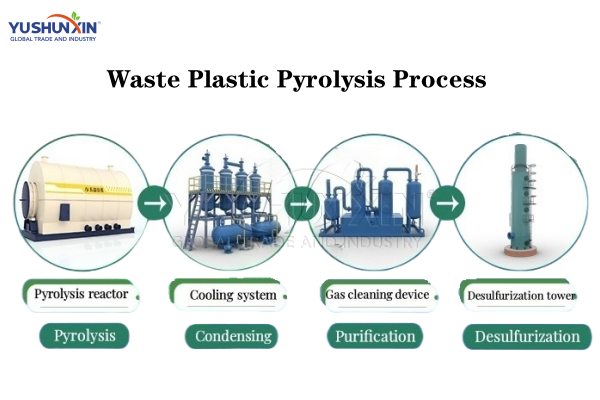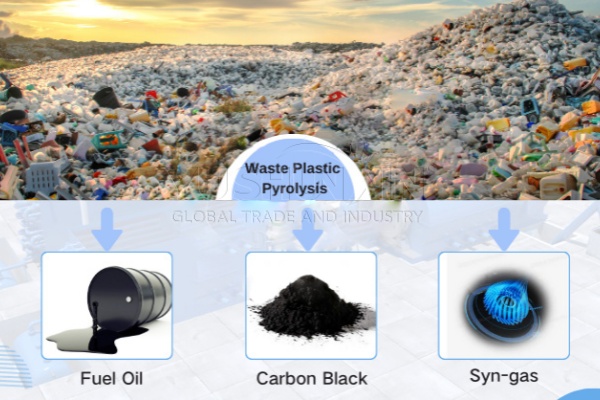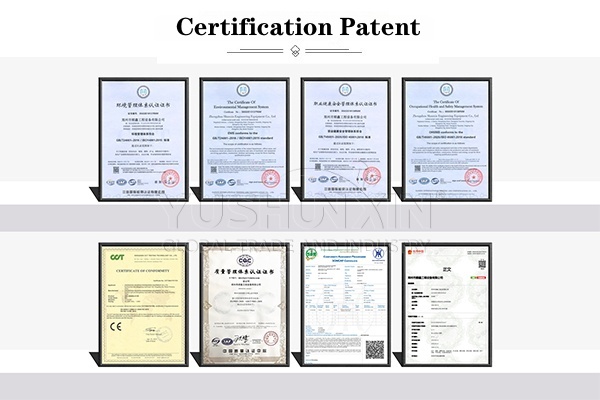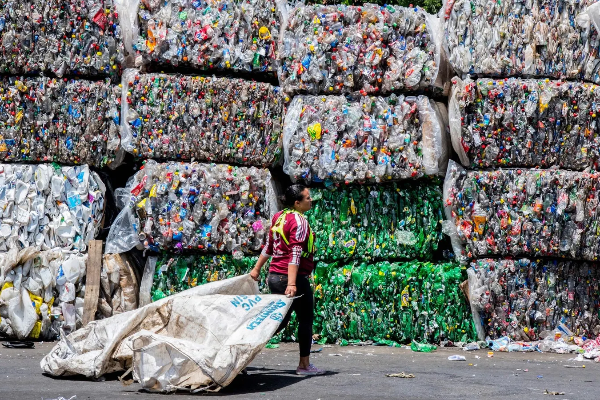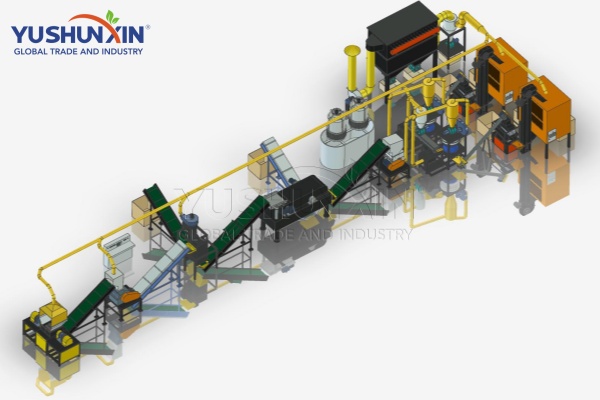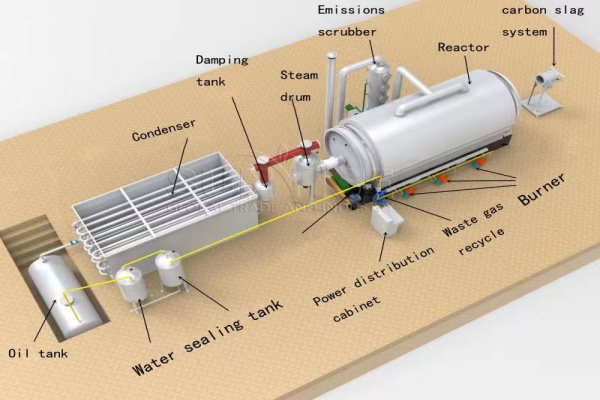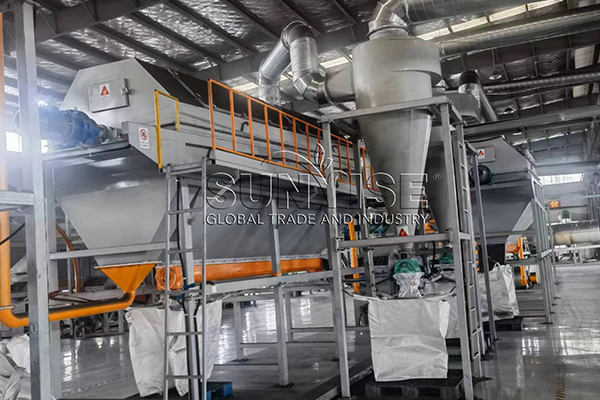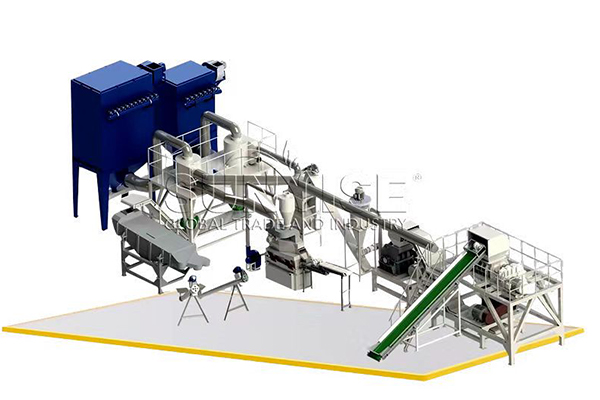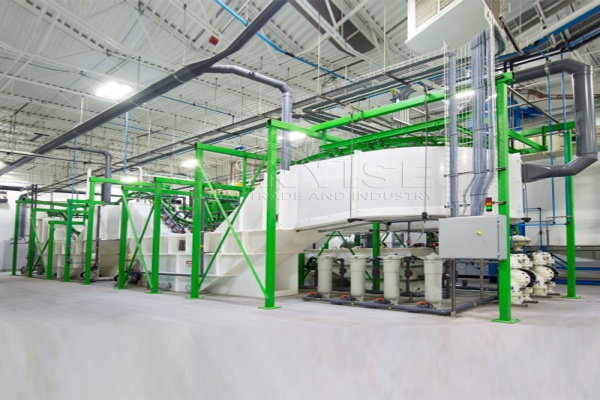As global plastic pollution continues to intensify, many countries and industries are seeking more efficient recycling solutions. Traditional mechanical recycling methods often struggle with issues such as plastic degradation, contamination, and the complexity of sorting mixed materials. These limitations reduce recycling efficiency and product quality. In response, pyrolysis technology has emerged as a promising alternative. This advanced chemical recycling method allows industries to thermally decompose waste plastics in a high-temperature, oxygen-free environment. Through this process, companies can convert plastic waste into high-value products such as fuel oil, combustible gas, and carbon black. By offering a cleaner and more efficient way to utilize plastic waste, pyrolysis provides a sustainable solution for resource recovery and environmental protection.
What types of plastic are suitable for pyrolysis recycling?
Some widely used plastics offer excellent potential for fuel oil production through pyrolysis due to their high oil yields. Understanding the characteristics and typical applications of these plastics can help recyclers identify valuable raw materials.
What is the process of waste plastic pyrolysis?
Before the pyrolysis process begins, proper pretreatment of plastic waste is essential to enhance efficiency and product quality.
- Classification and screening: Operators must first sort waste plastics by type. This step removes materials like PVC and PET that are not suitable for pyrolysis and helps reduce the risk of harmful emissions or contamination.
- Cleaning and drying: Dirt, moisture, and surface impurities should be eliminated to avoid undesired chemical reactions during heating.
- Crushing and pulverization: Plastics are then crushed into uniform, manageable particle sizes to ensure even heating and better conversion during pyrolysis.
The core of the recycling process lies in the thermal decomposition of plastic polymers under controlled conditions.
- Heating decomposition: In an oxygen-free or low-oxygen environment, pretreated plastics are gradually heated to temperatures between 300°C and 900°C. And this causes the long polymer chains to break down into smaller hydrocarbon molecules.
- Reaction control: By adjusting the temperature, heating rate, and retention time, operators can optimize both the quantity and quality of the final pyrolysis products, including fuel oil and carbon black.
After decomposition, the pyrolysis system shifts focus to condensing and separating useful products from the gas stream.
- Gas condensation: The hot vapor is cooled using a condensation system to recover high-value liquid fuel oil.
- Carbon black collection: Solid residues from the reaction are mainly carbon black, which can be repurposed in the manufacturing of rubber, plastic, pigment, or ink.
- Combustible gas utilization: The remaining uncondensed gas is flammable and can be recycled back into the heating system to reduce external energy usage.
Sustainability is a priority, and effective environmental controls are integrated throughout the pyrolysis system.
- Gas purification: Harmful components in the exhaust gases are filtered through deacidification, dust removal, and adsorption units to meet environmental emission standards.
- Wastewater treatment: Any wastewater generated is properly treated using filtration or chemical processes before discharge, preventing soil or water pollution.
Technical parameters of plastic pyrolysis plant
| Models | Batch Type | Semi-Continuous Type | Continuous Type |
| Unit Capacity | 5-20 Tons/day | 15-25 Tons/day | 20-70 Tons/day |
| Feedstock Size | ≤1600mm | ≤100mm | ≤80mm |
| Feedstock Pretreatment | Need to be pre-processed by shredder or grinder to the appropriate size | Need to be pre-processed by shredder or grinder to the appropriate size | |
| PLC | Optional | Optional | Equipped with |
| Reactor Cooling Time | 3-12 hours | 3-5 hours | 0 |
| Power | 12-25 kW/h | 15-30 kW/h | 50 kW/h |
| Maintenance Period | 1 day | 7-10 days | 45-60 days |
What is the waste plastic pyrolysis plant price?
Generally, the price of the system of recycling waste plastic is not fixed. Because it depends on your capacity, equipment types, project design, etc. The plastic pyrolysis system costs range from $80,000 to $400,000.
$80,000-$250,000 basic plastic pyrolysis system
Puolesta $80,000-$250,000 budget, you can choose to only buy a basic plastic pyrolysis system, which consists of feedstock pretreatment system (shredder, dryer), pyrolysis reactor (batch type), condensation system (cooling tower, oil-water separator), oil storage tank, gas recycling and purification system, basic emission treatment (dust collector, water spray) and control cabinet (semi-automatic).
$180,000-$300,000 upgrading design of plastic pyrolysis plant
With $180,000-$300,000, we can offer you an upgrading design of automatic feeding system, continuous pyrolysis reactor, multi-stage condensing system, oil-gas separator & storage units, dedusting system (spray tower + activated carbon), cooling tower, full control system (PLC, anturit, remote control), with an output of 15-25 t/d.
$300,000 to $400,000 continuous waste plastic pyrolysis plant
With cost of $300,000 to $400,000 or more, you can setup a waste plastic pyrolysis plant with the whole process. Including fully continuous feeding & discharging system, high-efficiency pyrolysis reactor with insulation, advanced oil-gas condensation & separation unit, gas purification and full recycling system, complete flue gas treatment system (spray tower, neutralizer, activated carbon), heat recovery system, intelligent control room (SCADA/PLC). The largest capacity can reach recycle 20-70 tons of waste plastic per day.
Can we recycle something from other waste? The answer is yes. As a professional e-waste bussiness provider, there are also many other waste recycling systems for you. Such as waste tyre recycling plan, waste tire pyrolysis plant, solar panel disposal line, etc. If you have any other requirements, welcome to contact us for your own e-waste recycling line now!
Ota yhteyttä

